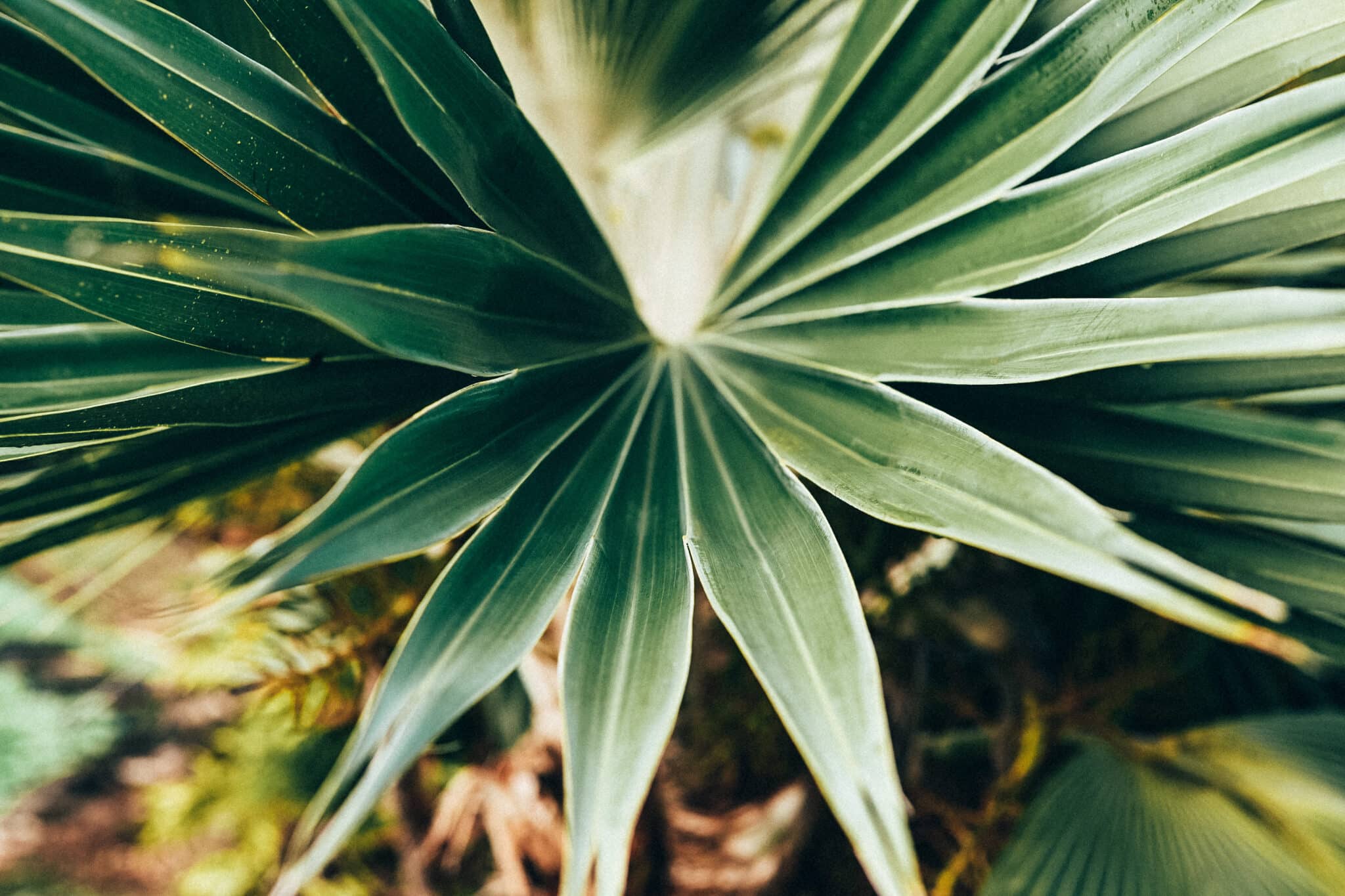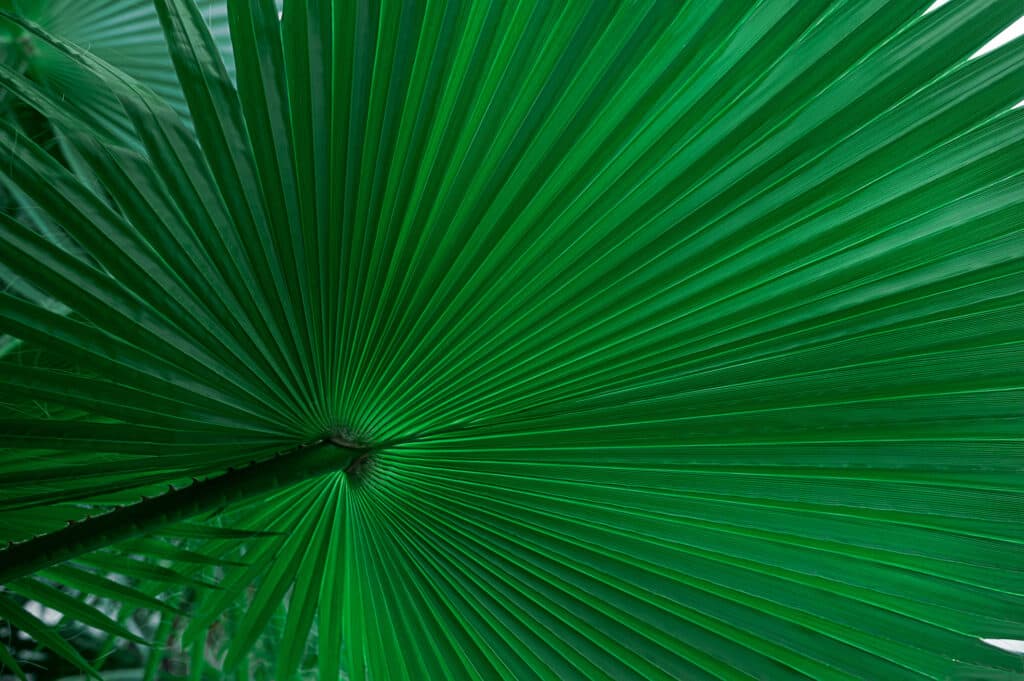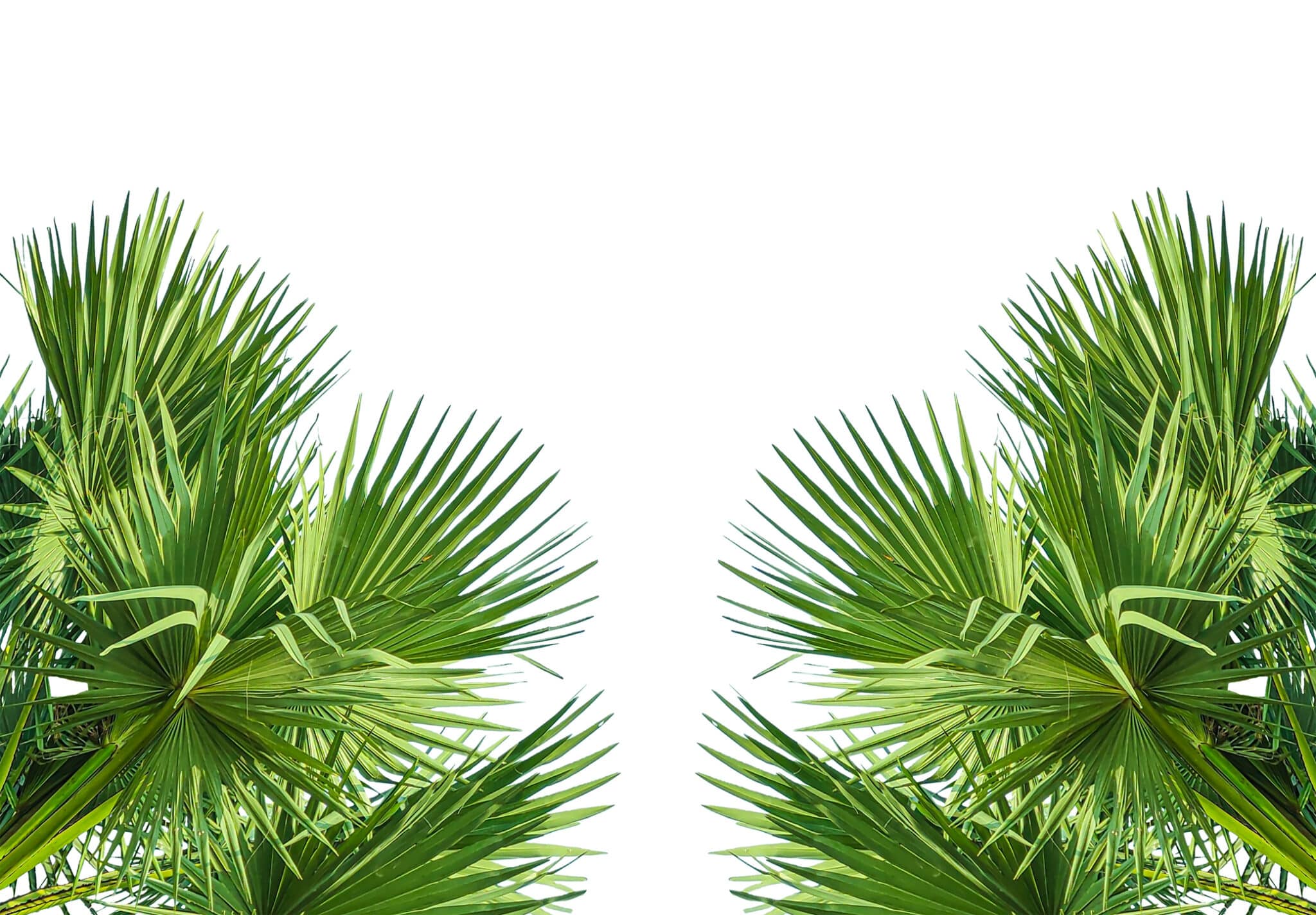Pritchardia affinis, known as Loulu lelo, is a native Hawaiian palm species admired for its ornamental and ecological value. It naturally grows in the wet lowland forests near Kaneohe and Kailua, where rainfall supports its lush, tropical growth. The palm features broad, fan-like fronds and a slender trunk that fits beautifully in garden landscapes and conservation projects. Pritchardia affinis also symbolizes Hawaiian heritage, making its preservation and propagation a culturally meaningful effort.
This palm species belongs to the Arecaceae family, with unique adaptations to Hawaii’s humid, coastal environments. It thrives in partially shaded areas and enjoys rich, well-drained soils with consistent moisture throughout the year. While endangered in the wild, it’s increasingly grown in nurseries for both restoration and residential use. Thanks to community support, Pritchardia affinis continues to flourish in places like Kailua and Kaneohe.
The species’ growth rate is moderate, typically reaching heights of 20 to 30 feet over several years. Its large leaves offer both aesthetic and practical benefits, including shade and habitat for local wildlife. These palms are often planted in clusters, creating a dramatic visual effect in tropical landscapes. Because of its versatility and cultural roots, Pritchardia affinis remains a favorite among native plant enthusiasts.

Loulu lelo – Pritchardia affinis Details
Pritchardia affinis, also called Loulu lelo, is a native Hawaiian palm celebrated for its beauty and environmental role. It grows naturally in wet, lowland forests around Kaneohe and Kailua, thriving where humidity and rainfall are abundant. This species features tall, slender trunks topped with wide, fan-shaped leaves that add tropical flair to any garden. Pritchardia affinis is more than just a pretty plant, it represents Hawaii’s ecological and cultural heritage.
Classified in the Arecaceae family, Pritchardia affinis prefers shaded spots with well-draining soil and consistent moisture. Though rare in the wild, it’s cultivated in nurseries and home landscapes, aiding both conservation and beautification efforts. Its moderate growth and elegant appearance make it ideal for public parks, residential yards, and native plant gardens. In places like Kailua and Kaneohe, it’s often used to restore natural habitats and support native wildlife.
This palm can grow up to 30 feet tall, with leaves that spread like umbrellas, offering ample shade and shelter. Its striking foliage adds texture and height, blending beautifully with other tropical and coastal species. Grouped plantings create a serene, resort-like atmosphere while promoting biodiversity and soil stability. Because of its charm and resilience, Pritchardia affinis is a top choice for Hawaiian landscaping and preservation.
Varieties and Cultivars
Pritchardia affinis does not have a wide range of cultivars, but it includes several naturally occurring variations. These variants mostly differ in leaf size, trunk thickness, and the amount of wax on the undersides of their fronds. Some rare types are more compact and suited for smaller urban gardens in areas like Kailua and Kaneohe. Despite the limited cultivated forms, these natural differences help gardeners choose plants best suited to their landscape goals.
Most Pritchardia affinis grown today are propagated from seed collected in native Hawaiian habitats. Seedlings often resemble one another, though minor traits may shift depending on environmental conditions and soil. Growers select plants with strong, upright trunks and well-formed leaves for restoration and decorative planting. This selection process strengthens the gene pool while preserving traits important for long-term survival.
As a native species, hybridization with other palms is not common or encouraged by conservationists. Purity of the species ensures continued resilience and ecological benefits for Hawaiian environments. Still, horticulturists explore genetic diversity within native populations to enhance adaptability. Understanding these subtleties helps maintain the beauty and identity of Pritchardia affinis in modern landscapes.
Best Time to Plant
The best time to plant Pritchardia affinis is during the early rainy season, typically from November through February in Hawaii. This period offers consistent rainfall, which helps young palms establish strong roots without requiring frequent manual watering. In areas like Kailua and Kaneohe, humidity levels and soil moisture are naturally higher during these cooler months. These conditions provide an ideal environment for Pritchardia affinis to settle and start healthy, vigorous growth.
Avoid planting during the hot summer months when moisture levels drop, and temperatures rise significantly. Dry conditions can stress young palms and increase their risk of transplant shock or leaf burn. If planting must occur in warmer months, provide partial shade and keep the soil consistently damp. Still, winter and early spring offer the best balance of warmth and moisture for successful establishment.
Nurseries often recommend starting seeds indoors before the rainy season, giving them a head start. Transplanting seedlings after a few months allows them to adjust better to outdoor conditions. This method works well for gardeners in Kaneohe and Kailua, where space and weather conditions vary. By aligning planting times with natural weather patterns, you increase your chances of long-term success with Pritchardia affinis.
Growing Conditions
Pritchardia affinis thrives in moist, well-drained soil with a slightly acidic to neutral pH, common in Kaneohe and Kailua. It prefers partial shade when young, though mature palms tolerate full sun if properly acclimated. Consistent watering is crucial, especially during the first two years of growth, to ensure deep root development. In coastal areas, this palm benefits from natural humidity and ocean breezes that help prevent fungal issues.
The ideal temperature range for Pritchardia affinis is between 65°F and 85°F, which suits Hawaii’s climate year-round. It’s not frost-tolerant and should never be exposed to freezing temperatures, even briefly. High humidity supports leaf health, preventing browning and splitting caused by excessive dryness. Wind protection is beneficial for young palms, as strong gusts can damage their delicate fronds.
This species also appreciates organic mulch, which helps retain soil moisture and moderate temperature. Compost-enriched soils encourage faster growth and enhance disease resistance without needing synthetic fertilizers. Spacing plants at least ten feet apart ensure proper airflow and reduces the risk of pest infestations. These growing conditions allow Pritchardia affinis to flourish in both private gardens and conservation sites.
Planting Instructions
Follow these detailed steps to plant Pritchardia affinis successfully in Kaneohe, Kailua, or similar Hawaiian climates:
Choose the Right Location
- Select a site with partial shade, especially important during the palm’s early development stages.
- Ensure the area has excellent drainage to avoid root rot and soggy soil conditions.
- Avoid planting in low spots where water might pool after heavy rain.
Prepare the Soil and Hole
- Dig a hole twice as wide and equal in depth to the palm’s root ball.
- Mix the native soil with compost to enrich it and improve water retention.
- Avoid chemical fertilizers at this stage to protect the young palm’s roots.
Planting the Palm
- Position the palm so the root ball top is level with the surrounding ground.
- Backfill the hole with the enriched soil, gently pressing it down to remove air gaps.
- Do not compact the soil too firmly, as this can limit root expansion.
Initial Watering and Mulching
- Water the newly planted palm thoroughly to help settle the soil and hydrate roots.
- Apply three inches of mulch around the base, keeping it two inches away from the trunk.
- Mulch helps maintain soil moisture, suppress weeds, and regulate ground temperature.
Stabilizing the Palm
- Stake the palm if located in a windy area, using two or three flexible supports.
- Tie loosely with soft material, allowing slight movement to promote trunk strength.
- Remove the stakes after six months or once the palm stands firmly without assistance.
Ongoing Monitoring
- Check soil moisture regularly during the first year and water as needed based on weather.
- Inspect the palm for signs of stress such as wilting, yellowing leaves, or poor growth.
- Adjust care as needed, particularly during extreme heat or unexpected dry spells.
With proper care, Pritchardia affinis will establish a healthy root system and begin thriving in its tropical setting.
Care and Maintenance
Caring for Pritchardia affinis involves routine watering, mulching, and occasional trimming to keep the plant healthy and vibrant. Water deeply once or twice weekly, allowing the soil to dry slightly between sessions to prevent root rot. In Kaneohe and Kailua, natural rainfall may reduce watering needs but always monitor soil conditions closely. Use mulch to retain moisture and suppress weeds, refreshing it every few months as it decomposes.
Fertilize sparingly using a balanced, slow-release formula designed for palms, applying it in spring and late summer. Avoid over-fertilizing, which can lead to salt buildup and harm the roots or discolor leaves. Remove dead or damaged fronds as needed, cutting them cleanly near the trunk without damaging healthy tissue. Regular pruning helps maintain an attractive shape and improves airflow through the canopy.
Inspect regularly for pests like spider mites and scale, especially during dry or windy weather. If detected early, these issues can be managed with horticultural oil or insecticidal soap. Diseases are rare but may include fungal infections if the plant is overwatered or poorly ventilated. Proper spacing and hygiene minimize these risks and promote long-term success with Pritchardia affinis.
Common Problems and Solutions
When growing Pritchardia affinis, you may encounter a few issues that are easily resolved with proper care and observation:
Yellowing Leaves
- Commonly caused by overwatering or poor drainage, especially in dense or clay-heavy soil.
- Check the root zone for sogginess and consider amending with sand or perlite to improve drainage.
- Nutrient deficiencies, particularly nitrogen or magnesium, can also cause discoloration in fronds.
- Apply a balanced, slow-release palm fertilizer to restore nutrient balance and vibrant leaf color.
Pests and Insect Infestations
- Watch for spider mites, scale, or mealybugs, which appear during dry spells or when air circulation is poor.
- Signs include webbing, brown bumps, or fuzzy white clusters on the undersides of fronds.
- Treat with insecticidal soap or horticultural oil, repeating as necessary to break the pest lifecycle.
- Hose down the fronds regularly to remove dust and deter pests from settling.
Root Rot and Fungal Issues
- Result from prolonged overwatering or when mulch is piled too close to the trunk.
- Symptoms include soft or discolored roots and foul-smelling soil around the base.
- Remove affected roots, improve drainage, and space plants to enhance airflow between specimens.
- Always use clean tools and avoid splashing water on leaves to reduce fungal spread.
Slow or Stunted Growth
- Often caused by compacted soil, lack of nutrients, or insufficient sunlight.
- Loosen soil around the base gently and check for proper light exposure during peak daylight hours.
- Feed with a palm-specific fertilizer to boost growth without overwhelming the plant.
- Ensure the palm isn’t shaded too heavily by nearby trees or structures.
By identifying and addressing these challenges early, you will help Pritchardia affinis stay healthy and grow beautifully year-round.
Uses and Landscaping Tips
Pritchardia affinis enhances tropical landscapes with its upright form, lush fronds, and symbolic ties to Hawaiian heritage. In Kaneohe and Kailua, it’s commonly used in residential gardens, public parks, and native habitat restoration areas. Its moderate height and elegant leaf structure make it perfect for borders, walkways, or centerpiece plantings. When grouped in clusters, these palms create a calming, island-inspired ambiance that fits coastal and tropical themes.
This palm also provides practical benefits such as shade, windbreaks, and habitat for birds and insects. Its low maintenance and resistance to most pests make it ideal for both novice and experienced gardeners. The broad fronds help reduce soil erosion and retain moisture, making it valuable in sustainable landscape design. Additionally, its slow growth reduces the need for frequent trimming or complex care routines.
Combine Pritchardia affinis with other native species like ti plants and hibiscus for a layered, natural look. Use stones or lava rock mulch around the base to accentuate the palm’s tropical character and improve drainage. Keep pathways clear by spacing palms at least ten feet apart to accommodate their mature canopy. By thoughtfully incorporating Pritchardia affinis, you’ll elevate the beauty and function of your landscape.
Propagation Methods
Pritchardia affinis is most propagated through seeds, which are relatively easy to collect and germinate. Harvest ripe black fruits from mature palms and remove the outer pulp before planting the seeds. Soak the cleaned seeds in warm water for 24 hours to soften the shell and speed up germination. Plant the seeds in a moist, well-drained mix of sand, perlite, and compost to encourage strong root development.
Keep the seed trays in a warm, shaded location with consistent humidity and temperature around 80°F. Germination usually occurs within two to six months, depending on freshness and environmental conditions. Once sprouts appear, move them into larger pots with rich soil and good drainage to support continued growth. Always label seedlings by collection site to help maintain genetic diversity in conservation or replanting projects.
Transplant seedlings outdoors once they reach 12 to 18 inches tall and have several mature leaves. Choose a planting site that offers partial shade and good air circulation to support healthy transition. Water regularly and protect young plants from direct wind or harsh sun during the first few months. Through seed propagation, gardeners and conservationists can ensure the survival of Pritchardia affinis across Hawaii.
Environmental Impact and Benefits
Pritchardia affinis plays an important ecological role in Hawaii’s native landscapes, especially in coastal forests near Kailua and Kaneohe. It provides shelter and nesting space for native birds, while its fruits offer food for various insects and wildlife. By stabilizing soil with its roots, it helps reduce erosion in fragile coastal ecosystems and along sloped garden terrain. Its presence in landscaping projects promotes biodiversity and supports efforts to restore native Hawaiian flora.
This palm also enhances environmental resilience by thriving with minimal intervention once established in the right setting. Unlike many non-native species, Pritchardia affinis does not crowd out other plants or disrupt local ecosystems. Its compatibility with native species makes it a smart choice for sustainable gardens and ecological restoration zones. In urban areas, it improves air quality and reduces surface heat through shade and transpiration.
Growing Pritchardia affinis helps preserve Hawaii’s botanical heritage, offering cultural and educational value to communities. Public planting projects often use this palm to increase awareness about endangered species and responsible gardening. Its resilience and low maintenance also make it a model plant for low-impact landscaping practices. As environmental awareness grows, Pritchardia affinis stands out as a symbol of sustainability and conservation.
Conclusion
Pritchardia affinis, or Loulu lelo, represents a unique blend of beauty, resilience, and ecological significance in Hawaiian landscapes. Its graceful form and low-maintenance nature make it an ideal addition to gardens in Kailua, Kaneohe, and beyond. From providing wildlife habitat to preventing erosion, this native palm supports environmental health in practical, visible ways. As more gardeners embrace sustainability, Pritchardia affinis offers a rewarding path toward conservation and aesthetic appeal.
Growing this palm helps preserve Hawaii’s botanical heritage and inspires appreciation for native plant species. Whether planted in residential yards or public spaces, it delivers beauty with a deeper ecological purpose. With proper care, this palm rewards gardeners with lush foliage, durability, and a strong sense of place. Its role in education and restoration makes Pritchardia affinis a standout in both horticulture and native ecology.
Choosing native species like Loulu lelo reduces reliance on imported plants and supports Hawaii’s fragile ecosystems. It’s a step toward climate-resilient, culturally respectful landscaping that honors the island’s natural legacy. From seed to towering palm, this species symbolizes growth, stewardship, and renewal across Hawaiian communities.
Investing in Pritchardia affinis means cultivating beauty and responsibility, one frond at a time.



